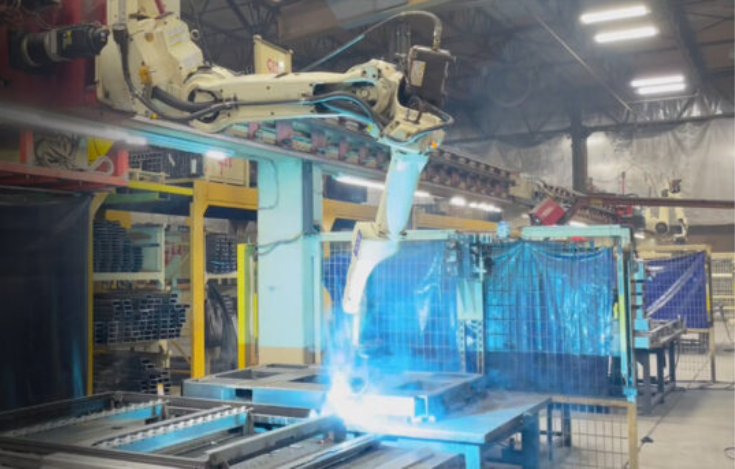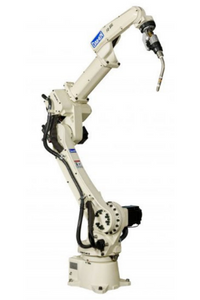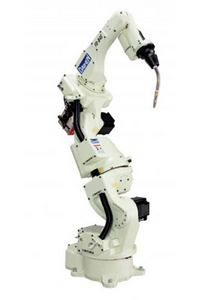
Meeting today’s demand for vehicles that are more lightweight, affordable and safer means automotive manufacturers are faced with new challenges, such as creating strong welds on thin materials and adapting more efficient processes for faster cycle times.
These challenges have led to increased growth in the integration of welding robots into the automotive manufacturing process. When integrating a welding robot – whether it’s a new robot on the line or an upgrade of an existing robot – take these steps to help uncover how to work with existing capital equipment to gain maximum results and optimal ROI.
Steps to Take When Integrating Welding Robots into an Automotive Process
1. Identify Your Challenges in Welding Automotive Parts
Start by identifying bottleneck areas in welding, which are typically due to inefficient processes or quality issues. Look for where robotic welding could help make production processes as efficient and cost-effective as possible while keeping quality up.
Some of the main challenges faced in welding automotive parts are often:
- Welding on thin materials where excessive heat can cause burnout.
- Difficulty creating quality welds when joining different materials, such as steel-aluminum joints.
- Excessive welding spatter that can cause damage to sensitive parts, such as catalytic converters.
- Inconsistencies in creating flat and clean welds when working with different material thicknesses and weld seam lengths.
- Too much weld cleanup or rework slowing down processes.
- Welding coated steel, which introduces impurities into the weld puddle and can create excessive spatter and porosity.
- Part inconsistency and poor joint fit-up due to part design or forming before the welding process.
2. Vet Out a Robotic Welding Solution that Fits Your Needs
With key production challenges identified, look for a robotic welding solution that can help overcome these challenges while gaining cost savings and higher throughput. When integrated effectively, robotic welding can double, or even triple, production time while producing accurate, high-quality welds with fewer mistakes, significantly cutting costs.

As you vet robotic welding manufacturers, here are questions you will want to consider:
- What is the robot’s reach? Will it reach all my welds?
- Will the robot be easy to implement and integrate?
- How difficult will it be to program and operate?
- What is the quality and consistency of the weld?
- Will it weld better than what I currently have?
- Does the manufacturer also manufacture the components (welding power source, controllers, positioners, sensors, torches and wire feeders) so you have one vendor to contact?
- Is on-site training provided for my team?
- Does the manufacturer have an expert service and support team?
3. Partner with an Experienced Robotic Welding Integrator
Due to the advanced technologies in today’s robots, you will find many advantages to working with an experienced robotic welding integrator, such as OTC DAIHEN. We work with major manufacturers in the automotive industry and have helped them define their improvement areas and the robotic technology needed to solve their challenges.
Our welding experts will compare robotic welding integration options, looking at output, overhead, ROI and more. We’ll put together a detailed analysis and recommendation for the best welding robots to integrate into your current production process.
As a one-stop shop for robotic welding solutions, we can help you from start to finish, which includes:
- ROI Analysis & Recommendations
- Design
- Assembly
- Programming
- Installation
- Customized Integration
- Training
- Operational Startup
- Monitoring
- Troubleshooting
- 24/7 Customer Service & Support
OTC DAIHEN – a Leading Manufacturer of Welding Robots
OTC DAIHEN is a leading manufacturer of welding robots and equipment, including robot controllers, positioners and sensors, that can be custom integrated into a variety of automotive production processes.
We are a one-stop solution provider, saving you headaches from dealing with multiple vendors. We can produce everything you need - welding power source, robot, torch, wire feeder and all the know-how and integrations to apply it to your toughest welding challenges.
Our welding robots include a 6-axis welding robot series and a 7- axis welding robot series.
The OTC DAIHEN 7-Axis Robot Series Includes

- Five models, available with advanced capabilities and a variety of features and options.
- Can hold optimal torch angle and attitude on longer parts, without compromise.
- Ability to “lie down” and reach around parts and obstacles, ideal for applications where part positioning is not available.
The OTC DAIHEN 6-Axis Robot Series Includes
- Two variations, the V conventional wrist and B hollow through-arm wrist.
- V variants are best suited for aluminum push torch applications or anywhere an additional few kilograms of payload are required.
- B variants are best suited for multi-robot steel applications.
- A variety of optional features available to fit various production needs.
Contact your OTC DAIHEN rep today to learn more about OTC DAIHEN robot models, specifications and features.



